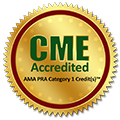
Biography
Biography: Leila Mohan
Abstract
Lifestyle diseases which include hypertension, diabetes, arthritis, obesity, insomnia, etc., have been said to be treated or altered by yoga, which is an ancient form of Indian art of living. Today’s stress and lack of physical exercise contributes to many lifestyle diseases. Yoga is a physical, mental and spiritual practice where exercise, breathing and meditation is said to have an influence on reducing high blood-pressure, improving symptoms of heart failure, enhancing cardiac rehabilitation and lowering cardiovascular risk factors. With the awareness of lifestyle diseases and its modifications by exercise, yoga practice has become popular and there is a revival of this among middle aged people. I would like to discuss 4 cases of progressive glaucomatous field loss-two of them with advanced field loss, which had no other risk factors but ardent practice of yoga for more than 10 years as the only ‘risk factor’. One is a male yoga teacher by profession; who, at the early age of 34 years, started developing laucoma and the field changes were progressing at an enormously fast rate. He was being followed up with medication which had to be increased on each visit. The second, a spiritually oriented 45 year old male, who was diagnosed to have glaucoma with intraocular pressures of above 40 mm of Hg, had trabeculectomy and during the postoperative period, was found to be practicing yoga on a regular basis. The third one, a professor in arts, a gentleman who vigorously practiced yoga after retirement-at the age of 55- developed moderate to severe glaucomatous field defects. Intraocular pressure was in the thirties and with maximum medication progression necessitated trabeculectomy. The fourth case was that of a 73 year old doctor, an ardent practitioner of yoga and a spiritual teacher, who had advanced glaucomatous field defects in both eyes with an intraocular pressure in forties without medication who underwent trabeculectomy after a trial of 3 anti-glaucoma medications. Many patients ask us the benefits of exercise or food which may modify glaucoma. Often the answer is negative. But this experience shows that we need to probe into their yogic practices, especially postures in which head goes below the level of the heart as in ‘shirasasana’-standing on the head. All four patients did ‘shirasasana’ for more than10 minutes regularly.
Conclusion: Posture with head below the level of heart for prolonged periods of time can produce deleterious optic neuropathy due to high intra ocular pressures. There are few papers in literature showing the influence of posture on intra-ocular pressure, which need to be studied in more detail.

